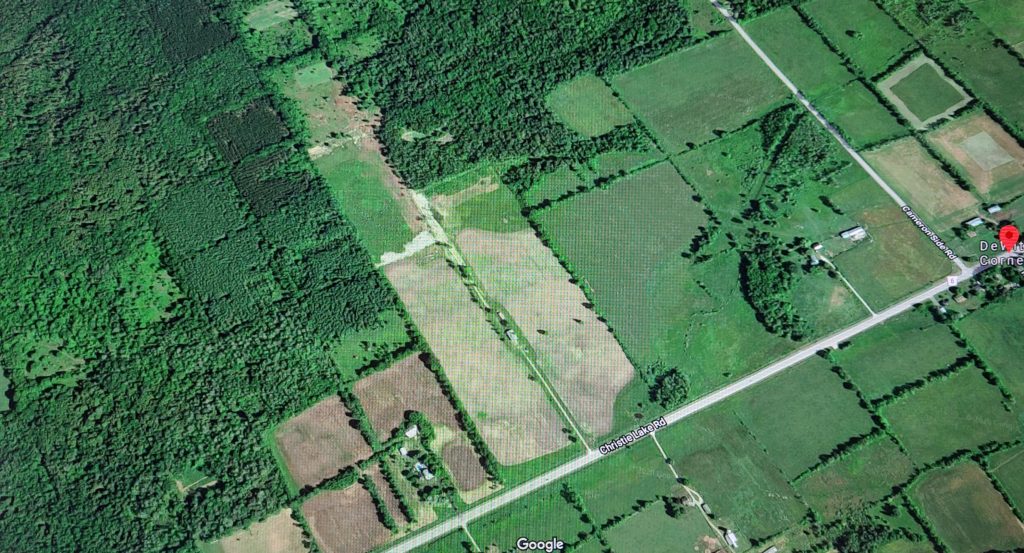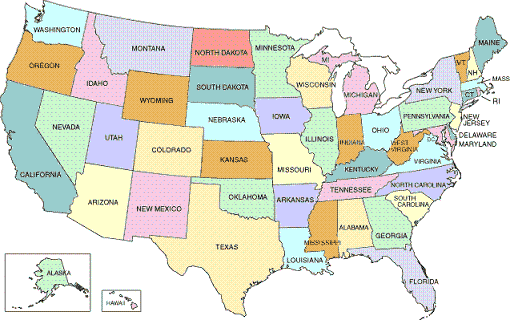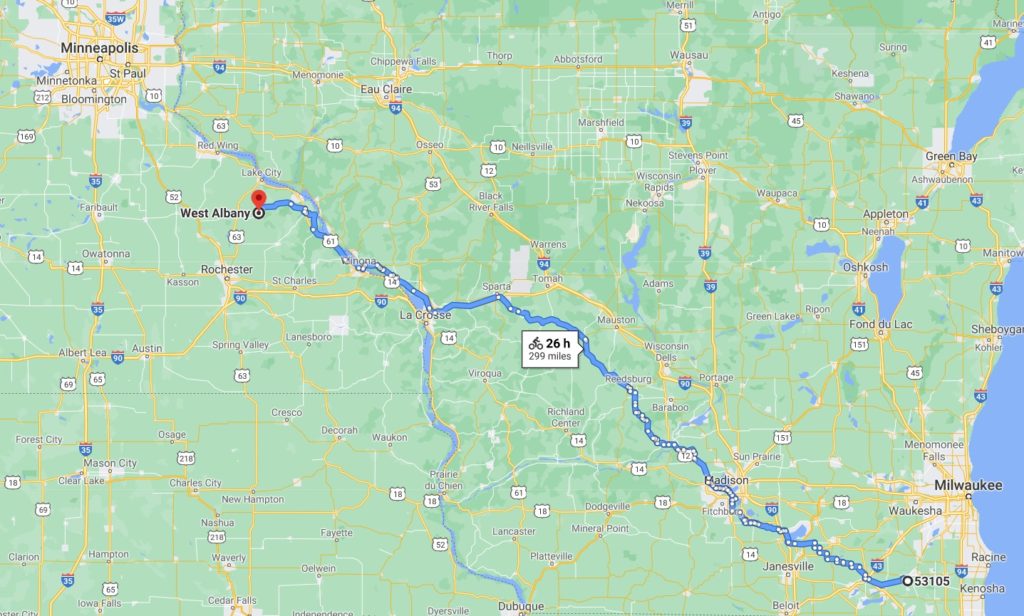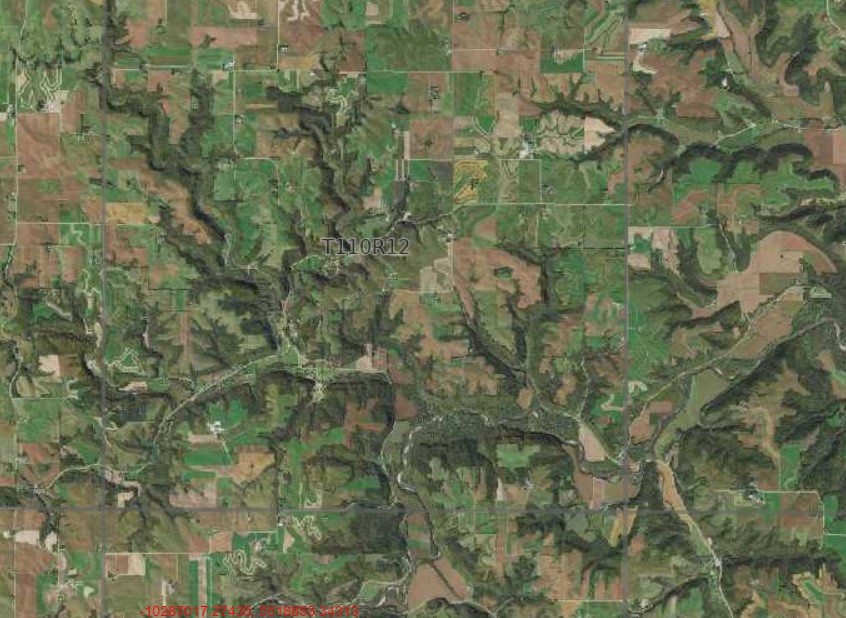Mason Family Saga – Part 3a
The Family of Robert Mason and Helen Gourlie
Robert Mason (1781-1862), Helen Gourlie (1785-1844) , sons John and James and daughters Jane, Elizabeth, and Ellen sailed from Scotland on the George Canning on 13th April 1821, leaving all Robert’s siblings, and most of Helen’s birth family, behind. The family arrived in Quebec on the 2nd of June[1]. By 11th Jul 1821 Robert received his first immigrants’ payment installment in Perth, Upper Canada. Robert records that James, aged one, died on 28th of June, while they were enroute to Perth.
On the 3rd of August 1821, Robert received a land grant in Lanark Township of Concession 2 Lot 9W and, later that year, part of Concession 2 Lot 10, 25 acres, a park lot adjacent to the village of Lanark. The crown patent for the park lot was issued in 1828, indicating that settlement tasks were completed, probably with the assistance of students in his school. It appears that the family may have lived on concession 2 Lot 9W for only a short time. As a result, ownership was later disputed and settled in court. The park lot, in the village of Lanark provided Robert with access to the village school where he taught for many years.
Descendants of Robert and Helen Mason
Robert Mason and Helen Gourlie were married the 2nd of December 1808 in Cambuslang Parish, Lanarkshire, Scotland. They had a total of nine children. The one instance of emotion Robert shows in his journals is when he records Helen’s death. While we gained some insight into life in Lanarkshire Scotland, little is written about family life during the early years in Lanark Village. His notations indicate that he followed the evolution of his family as his grandchildren arrived and that letters and visits were common. Their family included:
• James Mason (1809-1810), Robert and Helen’s first-born, died at nine months in in Old Monkland, Coatsbridge Parish, Lanarkshire, Scotland.
• Jeane or ‘Jane’ Mason (1810-1896), born 18 December 1810 in Cambuslang Parish, Lanarkshire, attended school from an early age. Robert’s diaries show pride in her scholastic achievements and she is a ‘scholar’ until their departure from Scotland in 1821.
Jeane lived with her parents, Robert and Helen, in Lanark Village, and later with her father until his death in 1862. On 25 Apr 1843, Robert records that Jane, who had four or five years of schooling before leaving Scotland, and no doubt continued under her father’s tutelage, began to teach at the mill school. In 1852, Jean is a schoolteacher in Lanark Village, possibly replacing her father.
Although Robert records the building of a frame house on the Lanark Village property shortly before his death in 1862, Jeane lived with James (1824, Scotland) and Ellen (Ellen Watt 1826, Ontario) Richardson[2] in Drummond Township in later life and she can be found in the census records 1871-1891. No family connection between the families was found so Jean, listed as a boarder, may have tutored or assisted with the raising of the family.
In contrast to her father’s staunch support of the Church of Scotland, Jeane realigned her religious affiliation to Independent and later Congregationalist[3] during this time. Jeane did not marry and died 23 Jun 1896.
• Elizabeth Mason (1812-1850), was born in Cambuslang, Lanarkshire, Scotland and married Thomas Miller (1809-1868), in 1833 in Lanark County, Upper Canada. Thomas was born in Dumbarton, Scotland, eldest son of William Millar and Margaret Burns. William and Margaret Miller arrived in Canada in 1820 among the first of the ‘Lanark Settlers’ and William wrote back to Scotland encouraging his parents and siblings to follow the next year. William and Margaret lived on Lot 14 Concession 2 of Dalhousie Township until 1836 when they moved to Racine County, Wisconsin. They entered the United States via Morristown, New York in 1836 and registered the first of several patents in Wisconsin in 1843. William and Margaret died in Raymond township, Racine County, Wisconsin between 1855 and 1860. No death records or burials have been found.
Thomas, his parents, and siblings lived on the Dalhousie property, just north of Elizabeth’s home until his marriage to Elizabeth Mason on 22 March 1833.
The Search for a Home – Thomas & Elizabeth

When William, eldest son of Elizabeth and Thomas was born in 1834, they lived on Concession 6 Lot 3 of Lanark Township, not far from Lanark Village. Thomas began negotiations with the Crown Lands Commissioner for property in Bathurst Township in November 1833 when he wrote to William Morris, MPP stating that he had purchased Bathurst Township Concession 2 Lot 9 SW from John McKenzie. This lot was identified as a clergy reserve but supposedly was now owned by John McKenzie. He indicates that two brothers had already settled in the neighbourhood and he desired to live nearby. A notation on the letter identifies him as the brother-in-law of Robert Boyle, Lanark. On December 26th, 1833 John McKenzie assigned all his rights, title and interests to Thomas, yeoman in Lanark township. Thomas writes to the Commissioner of Crown Lands on 12th March 1840[4] that,
“I have been occupying a lot of land in the township of Bathurst being Lot no 9 west half clergy land for the past four years. The lot was originally purchased by an individual of the name of John McKenzie for 11/3 per acre and I bought his improvements and got his purchase transferred and put in my name at the time. I bargained with him – he had previously paid the first instalment of £ 5.0.0.
I intended to pay the instalments as they came due however as cost of having to pay him a high amount for his improvements on the lot, it has been out of my power to advance anything, but as I now have got him paid up, I intend and expect to be able to send you a considerable sum in the course of a few weeks. In the meantime, I will thank you to forward to me a statement of the amount due on the lot, interest included.
Also the east half of the said lot is I believe open for purchase no person as far as I am aware having ever made any claim or offer on it. I am desireous (sic) of purchasing all and will give the same amount per acre for it as for the lot I am now occupying and will you be so good as to accept of me as the purchaser and forward me a statement of the purchase when I will immediately pay you the first instalment along with the money I intend to send you for the lot I already have in my possession.”[5]

About 1836 Thomas moved the family to Lot 9 Concession 3 SW in Bathurst Township, into a community where many of his relatives now lived. Their home in Lanark township appears to have been temporary housing after his marriage. The Crown Lands Office records transfer of the property, No. 221, on 16 Apr 1841, but Thomas was not granted a patent for Concession 3 Lot 9 SW until 4 Jun 1860. The patent for Concession 3 Lot 9 NE was granted to Roderick McKenzie on 20 February 1857. It appears that John McKenzie’s heir did not approve of his father’s transaction and sought the property for himself. To settle claims on this property Roderick received the north half and Thomas the south half. This thwarted Thomas’ effort to expand his holdings and potentially, provide a farm for his son. It is interesting to note that, after he left for Minnesota, Thomas granted the deed for this property to John Chaplin on 19 Mar 1866. A descendant of this family was to later marry a descendant of William and Margaret Miller.

Thomas Miller & Ann Wilson
Thomas and Elizabeth had a family of nine children before Elizabeth died 27 Jan 1850 shortly after giving birth to twins who survived and were adopted by relatives. Their story will be told later. Many of Elizabeth and Thomas’ eleven children moved to Minnesota with their father and his second wife, Ann Wilson Donaldson (1811-1887) whom he married about 1853. Ann was born in Banffshire, Scotland, daughter of George Wilson and Jean Reid. Some of Anne’s children from a previous marriage, the children of Ann and Thomas and those of Elizabeth and Thomas accompanied their parents to Minnesota.[6]
Thomas died in West Albany township[7], Wabasha County, Minnesota[8] in 1868, shortly after emigration. Ann continued to live on this property and William, Thomas’ eldest son, who immigrated in 1865, farmed nearby. Ann’s brothers William and George Wilson, who emigrated in 1858 to Wabasha County, also lived nearby and may have provided the motivation for Thomas and Ann to move to Minnesota in 1862. A letter, written back to Lanark County also mentions William Corry, son of Isaac Corry who married Jean Ritchie, William Sterling, who married to Lucretia McBain and who was the father of James Sterling who married Helen Gourley Miller, as having travelled with them. It is suspected that others in the group were also from Lanark County. No doubt Thomas’s ‘Miller relatives’ near Racine, Wisconsin were visited as the family passed through that state.

It is interesting to note that the emigration of the Miller family closely follows the extension of the rail lines. The first railroad line in the state was opened between Milwaukee and Waukesha in 1851 by the Chicago, Milwaukee, St. Paul and Pacific Railroad. The railroad pushed on, reaching Milton, Wisconsin in 1852, Stoughton, Wisconsin in 1853, and the capital city of Madison in 1854. The company reached its goal of completing a rail line across the state from Lake Michigan to the Mississippi River when the line to Prairie du Chien was completed in 1857. The first group of Lanark County settlers arrive in 1858.
Burial sites for Thomas and Ann have not been found but it is suspected that they lie in undocumented graves in the Scotch Prairie Settlement Cemetery, an abandoned cemetery on section 13 of West Albany township. It is believed that the cemetery is close to the location of their farm, almost directly north of Theilman, Minnesota (southside of Hwy 60, between County Rd. 4 and 13), in ravine country south of the Mississippi River and on the border of West Albany and Glasgow Townships.

to be continued –
http://diane-duncan.com/2020/10/19/mason-family-saga-part-1/ http://diane-duncan.com/2020/10/25/mason-family-saga-part-2/
[1] List of Cambuslang families admitted on the Government grant as settlers in Upper Canada on the ship ‘George Canning’ – woman age 35; male children ages 5 mo., 6.5; female children ages 5, 9, 10.5 (Jean, Elizabeth, Helen, John, James); National Archives of Canada [Ottawa]: MG 11, Colonial Office 42, vol. 159, page 507, list 1.1 and Upper Canada on the Ship ‘George Canning’. Glasgow, April 13, 1821; 11 lists dated April 13, 1821, signed by Robert Lamond, Sect. to the Committee on Emigration for Scotland.
[2] 1861 Census: James age 37, Clerk, Elizabeth (Alston) 34, Scotland, George age 2, Janett Alston age 66, Scotland
1871 Census: James age 47, farmer, Scotland, Ellen age 45, Ontario, George age 12, Margaret age 9, Jane Mason age 60, Scotland
1881 Census: James age 57, farmer, Ellen (Helen Watt ) age 55, George age 22, farmer, Maggie age 19, Jane Mason age 70, Scotland.
1891 Census: George age 32, Phoebe Jane (Knowler) (m. 29 Nov 1882) aged 33 (wife), Ellen, mother 65, Margaret (sister) age 29, daughters Carrie Bell age 7, Nellie E (Helen Elizabeth). age 4, Edna Eveline age 1, Jane Mason age 80.
[3] Independents were the forerunners of Congregationalists. Britannica describes Congregationalists as a “Christian movement that arose in England in the late 16th and 17th centuries. It occupies a theological position somewhere between Presbyterianism and the more radical Protestantism of the Baptists and Quakers. It emphasizes the right and responsibility of each properly organized congregation to determine its own affairs, without having to submit these decisions to the judgment of any higher human authority, and as such it eliminated bishops and presbyteries. Each individual church is regarded as independent and autonomous.” https://www.britannica.com/topic/Congregationalism
[4] Letter in the Post Office, Perth, Bathurst Courier, 28 February 1840; 25 December 1840; 4 Oct 1842; 16 February 1847; sender unknown.
[5] Township Papers, Ontario Archives, Toronto, Ontario.
[6] Their arrival is also noted in the history of the community, History of Wabasha County, West Albany Township, Chapter 23, pp. 777-787. Dr. L.H. Bunnell, H.H. Hill publisher, 1884. http://sites.rootsweb.com/~mnwabash/scotchsettlementcm.htm
[7] West Albany is an unincorporated community in West Albany Township, Wabasha County, Minnesota, United States. West Albany was platted in 1857, and named after Albany, New York, the native home of a large share of the first settlers.
[8] https://www.wikiwand.com/en/Wabasha_County, Minnesota Wabasha County lies on Minnesota’s border with Wisconsin (across the Mississippi River. The Mississippi flows southeast along the county’s eastern line. The North Fork of the Whitewater River flows east through the southern part of the county, then discharges into the Whitewater in Olmsted County. The combined Whitewater then enters the southeastern part of Wabasha County, flowing northeast to its discharge point into the Mississippi. The Zumbro River flows east-northeast through the county to its discharge point into the Mississippi. East Indian Creek and Miller Creek drain the northern part of the county into the Mississippi.
